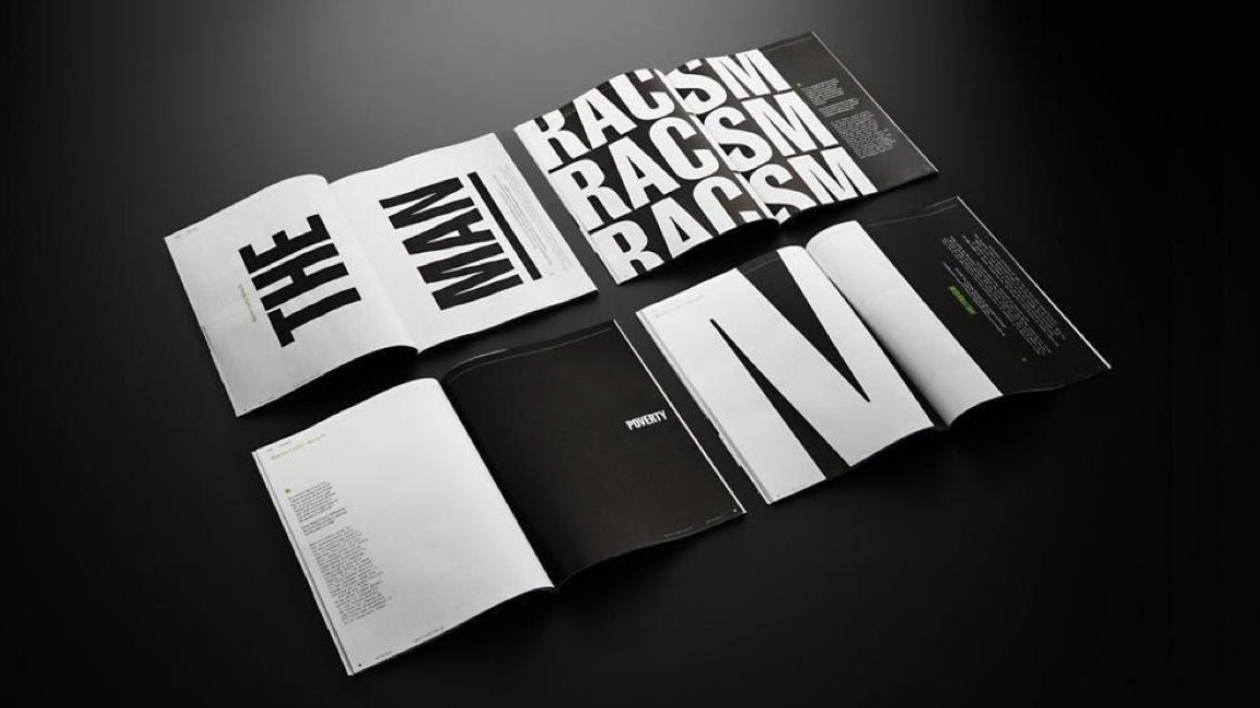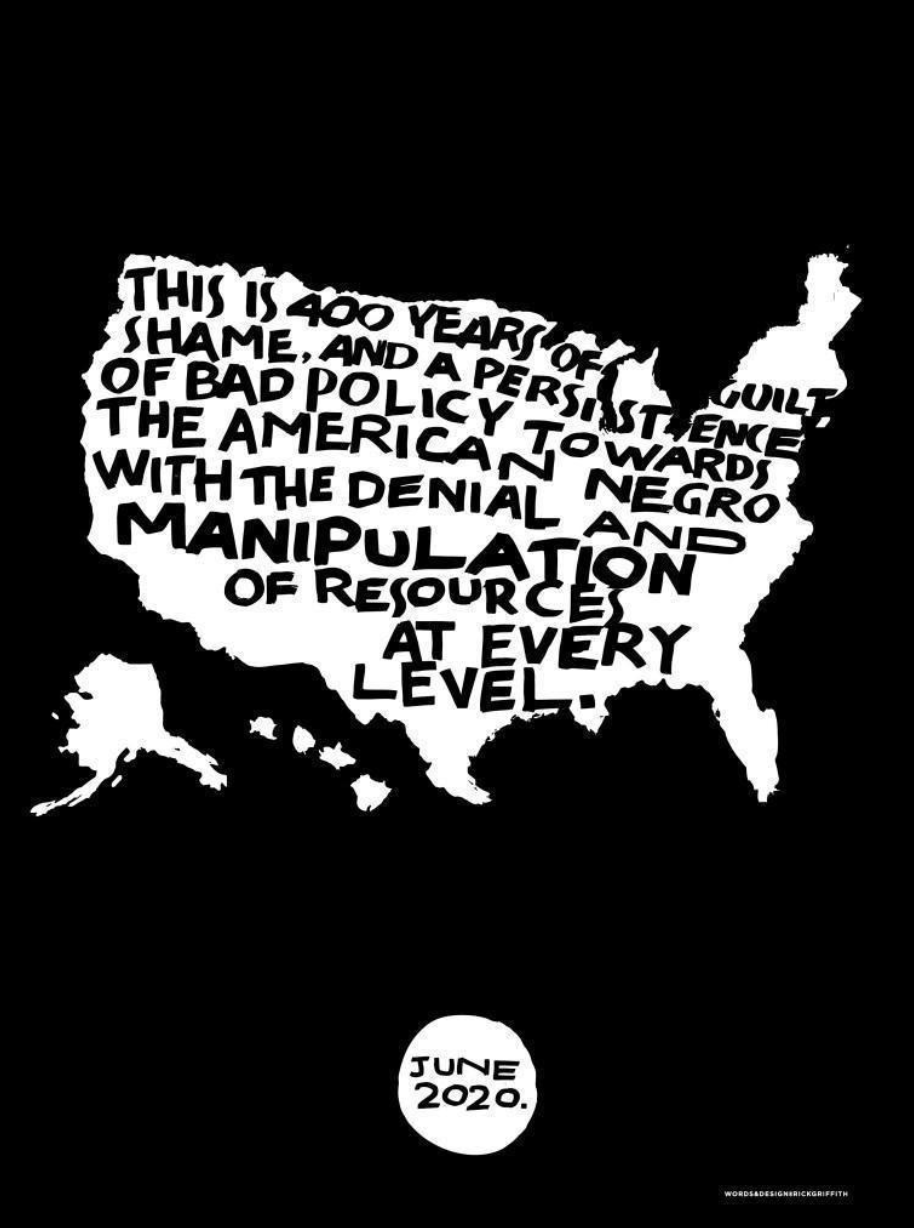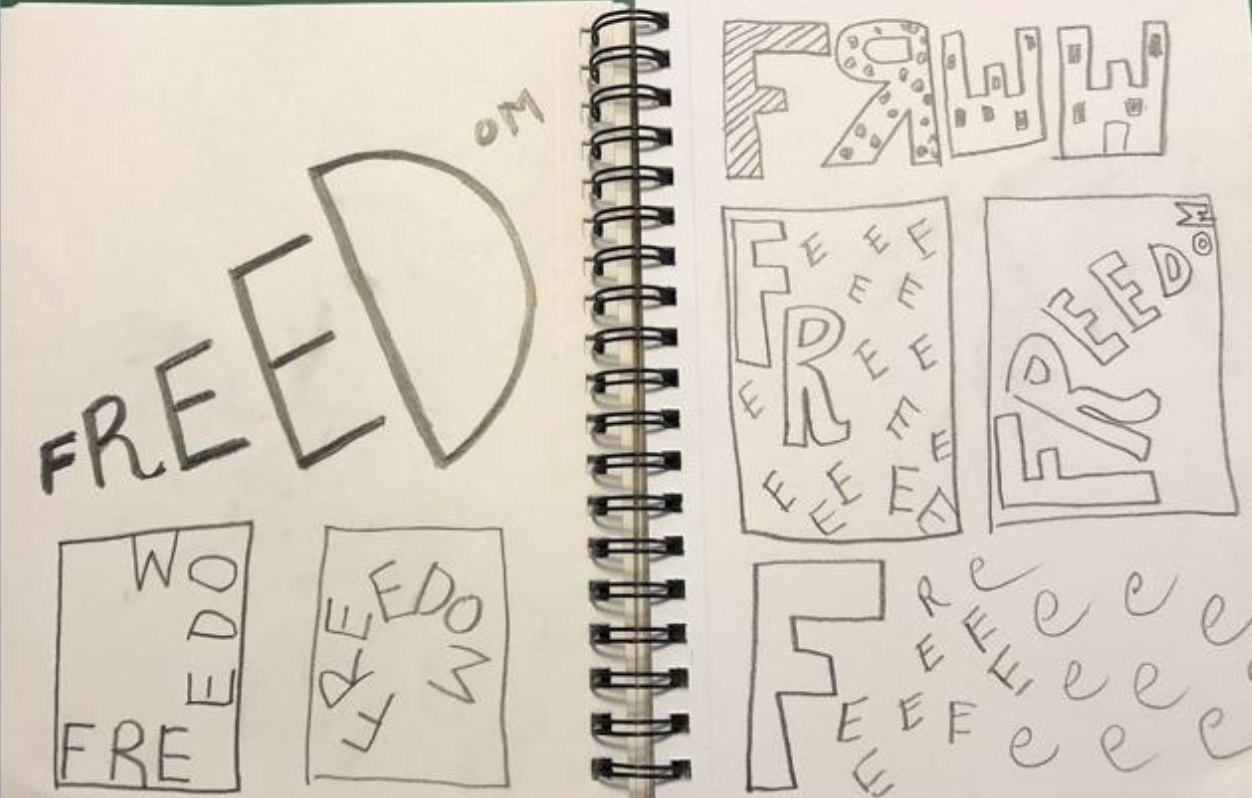Overview
Students will prepare for upcoming art-making lessons using close-looking, speaking, writing, and/or sketchbook prompts.
Materials and Tools
- Pencil
- Sketchbook or one to two pieces of paper
Activities
Note: The following activities are written with sample language you may use with your students. Following the art-making lesson, you may choose as many reflection activities as desired for students to work on in class or independently.
Lesson Introduction (2 minutes)
In this lesson, we are going to explore how size and scale change the meaning of text. Artists can express different meanings in text by changing the size of a specific word or letter in relationship to others.
Step 1: Close Looking (15 minutes)
Note to Teachers: Before teaching with a work of art, spend some time looking closely at it on your own. Familiarizing yourself with the artwork will prepare you to guide the close-looking activity.
If your students are new to looking at art together, you can introduce the activity to students in the following way:
Today we are going to spend some time looking at and discussing a work of art together. When we look at art, there are no right or wrong answers. I’m going to ask you to look closely, share your ideas about what you see, and listen respectfully to each other’s ideas. Everyone’s ideas are important. We all see things differently, and when we look at art, we can learn to see through each other’s eyes.


Let’s look closely at these two designs. The first design was created for a special edition of The Atlantic magazine about the legacy of Dr. Martin Luther King, Jr. The second was created for a Black Lives Matter poster project.
Give students a full minute to look on their own.
- What are some of the choices the graphic designers made in these two examples?
- What do you notice about how the artists used size and scale?
- What do you notice about the placement and the character of the letters?
- How are the letters arranged?
- How do these choices add meaning to the images?
Step 2: Sketchbook Activity (15 minutes)
Reflecting on what you learned from looking at the two designs, think about how
you could change the word you’ve chosen to work with that expresses something about you.
Take a moment to think about these questions:
- What other ways could you change your word to increase the impact of your design? Would you repeat it? Would you group the letters in a special way? How would you place it on a page?
Write down your thoughts and use your sketchbook as a place to draw and experiment with more ideas.
Step 3: Writing Activity (5 minutes)
Write about one of the choices that you made.
- How would you explain the reason for this choice to someone else?
Pretend you are making a proposal for a poster design and need to convince your fellow artists to use your idea. Write several sentences to describe your choices and why your design is effective.
Vocabulary
Size
Scale
Character
Resources
The Original Champions of Design, Martin Luther King Jr. special edition, The Atlantic, March 1, 2018. https://www.theatlantic.com/politics/archive/2018/04/a-new-focus-on-a-familiar-icon/557039/
Rick Griffith, Black Lives Matter poster project, 2020. https://www.culturetype.com/2020/07/03/art-for-change-12-black-designers-created-black-lives-matter-protest-posters/

